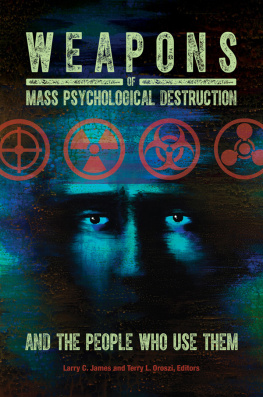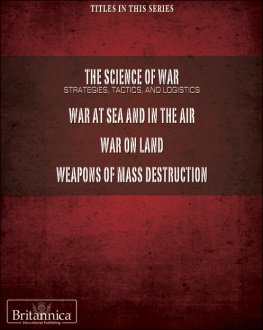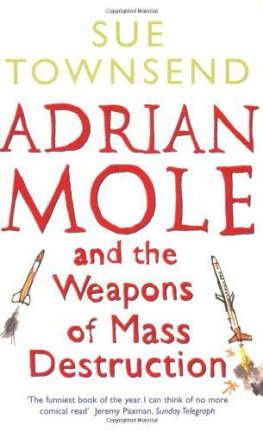Recent Titles in Practical and Applied Psychology
Meta-Physician on Call for Better Health: Metaphysics and Medicine for Mind, Body and Spirit
Steven E. Hodes, M.D.
The Powerful Bond between People and Pets: Our Boundless Connections to Companion Animals
P. Elizabeth Anderson
Sexual Enslavement of Girls and Women Worldwide
Andrea Parrot and Nina Cummings
The Global Muslim Community at a Crossroads: Understanding Religious Beliefs, Practices, and Infighting to End the Conflict
Abdul Basit, Editor
Living in an Environmentally Traumatized World: Healing Ourselves and Our Planet
Darlyne G. Nemeth, Robert B. Hamilton, and Judy Kuriansky, Editors
The Psychology of Black Boys and Adolescents
Kirkland Vaughans and Warren Spielberg, Editors
Lucid Dreaming: New Perspectives on Consciousness in Sleep
Ryan Hurd and Kelly Bulkeley, Editors
The Myth of Black Anti-Intellectualism: A True Psychology of African American Students
Kevin O. Cokley
Borderline Personality Disorder: New Perspectives on a Stigmatizing and Overused Diagnosis
Jacqueline Simon Gunn and Brent Potter
Ecopsychology: Advances from the Intersection of Psychology and Environmental Protection
Darlyne G. Nemeth, Set Editor, with Robert B. Hamilton and Judy Kuriansky, Volume Editors
Weapons of Mass
Psychological
Destruction and the
People Who Use Them
Larry C. James and Terry L.
Oroszi, Editors
Practical and Applied Psychology
Judy Kuriansky, Series Editor

Copyright 2016 by Larry C. James and Terry L. Oroszi
All rights reserved. No part of this publication may be reproduced, stored in a retrieval system, or transmitted, in any form or by any means, electronic, mechanical, photocopying, recording, or otherwise, except for the inclusion of brief quotations in a review, without prior permission in writing from the publisher.
Library of Congress Cataloging-in-Publication Data
Names: James, Larry C., editor. | Oroszi, Terry Lynn, editor.
Title: Weapons of mass psychological destruction and the people who use them / edited by Larry C. James, Terry L. Oroszi.
Description: Santa Barbara : Praeger, 2016. | Series: Practical and applied psychology | Includes bibliographical references and index.
Identifiers: LCCN 2015028353| ISBN 9781440837548 (hardback) | ISBN 9781440837555 (ebook)
Subjects: LCSH: TerroristsPsychology. | TerrorismPrevention. | Weapons of mass destruction. | World politics20052015. | BISAC: POLITICAL SCIENCE / Political Freedom & Security / Terrorism.
Classification: LCC HV6431 .W4143 2016 | DDC 363.325dc23
LC record available at http://lccn.loc.gov/2015028353
ISBN: 9781440837548
EISBN: 9781440837555
20 19 18 17 161 2 3 4 5
This book is also available on the World Wide Web as an eBook.
Visit www.abc-clio.com for details.
Praeger
An Imprint of ABC-CLIO, LLC
ABC-CLIO, LLC
130 Cremona Drive, P.O. Box 1911
Santa Barbara, California 93116-1911
This book is printed on acid-free paper 
Manufactured in the United States of America
Contents
Judy Kuriansky
Larry C. James and Terry L. Oroszi
Larry C. James and Terry L. Oroszi
Michelle Holman, Timothy Shaw, Larry C. James, and Terry L. Oroszi
Lewis M. Pulley
George W. Heddleston
Mark A. Staal
Vikram Sethi with the assistance of Sandip Chakraborty
R. William Ayres
Joseph Tomlins, Elvin Sheykhani, James Sottile, and Bruce Bongar
Kelley J. Williams
Kelley J. Williams
Kelley J. Williams
Kelley J. Williams
Kelley J. Williams
William ODonohue
Terry L. Oroszi and Larry C. James
Larry C. James
Series Foreword
Dirty bombs, mustard gas, nuclear fallout, agent orange. These may be words from the past when my generation studied about wars in school, or ducked under our desk in drills during the Cold War, but such dangers are still possible. In our present times, we hear more about techniques like shoe bombs, suicide bombings, and IEDs. And we are still reeling from large-scale terrorism attacks on 9/11 in New York and other countries like Spain and Bali, and from more up-close-and-personal attacks like that of the Tsarnaev brothers in the Boston Marathon bombing.
Are we securely safe on planes or trains, in buildings, or while running marathons?
Honestly, no. Any public place can be the target for terrorists. Our fear rises to as levels as alarming as the colors of the terror alert chart. Fortunately, many threats are thwarted, thanks to intelligence forces monitoring terrorist communications, but nevertheless, we live in an age of high alert.
Public fear is reasonable and warranted. As psychologists, we do our best to calm those fears whenever terror events happen, whether close to home or abroad. We must control our fears, trust our protectors, and yet be prepared.
Authors Larry James and Terry Oroszi make us very aware that education is key in that process. Educate us they do, in their book, Weapons of Mass Psychological Destruction and the People Who Use Them.
Their approach is brilliant and breakthrough. Many of us became very aware of the phrase weapons of mass destruction when the Bush administration justified the invasion of Iraq on the premise that terrorist Osama bin Laden was harboring and planning to use these. Now, James and Oroszi introduce us to an elaborated concept that is illuminating and helpful in understanding what we are facing in current times of terrorism: Weapons of Psychological Mass Destruction or WPMD.
Congratulations to co-author Terry Oroszi for coining the term during a discussion aiming to understand the intent and motivations of the Boston Marathon terrorist attack. Its a brilliant concept, one that threads through the chapters of this book, tying together fascinating facts about and insights into all aspects of the terrorism we face. This ranges from a psychological understanding of the nature of terrorists themselves and the acts they commit, to a factual and extensive comprehension of the actual agents.
The concept makes perfect sense. The WMD that terrorist use are meant to create mass psychological distress. Thus, expanding the concept to WPMD is an approach that should be known by all psychologists, as well as law enforcement, homeland security, politicians, policy makers, scientists, international relations experts, and students of related disciplines. In my role as Chair of the Psychology Coalition of NGOs at the United Nations, where our mission is to educate government and civil society representatives and other stakeholders about contributions of valuable important psychological science and practice to achieving the global agenda, James and Oroszis concept of WPMD can be helpful to ensure one of the Sustainable Development Goals adopted for the next 15 years, from 2015 to 2030, to ensure peaceful societies.
I wish I had known this WPMD concept as I sat, some time ago, on a destroyed building step at the perimeter of the pit at Ground Zero created by the September 11 terrorist attacks on the World Trade Towers, talking to an FBI agent about what can be done to prevent future such attacks. I also wish I had the concept in mind when talking to the driver of the truck doing reconstruction at that scene, a driver who told me how traumatized he was by inadvertently driving over what turned out to be body parts. Now, I am armed with this valuable concept of WMPD when called upon to communicate about the psychological sequealae of such acts while addressing professionals about coping with terror.













